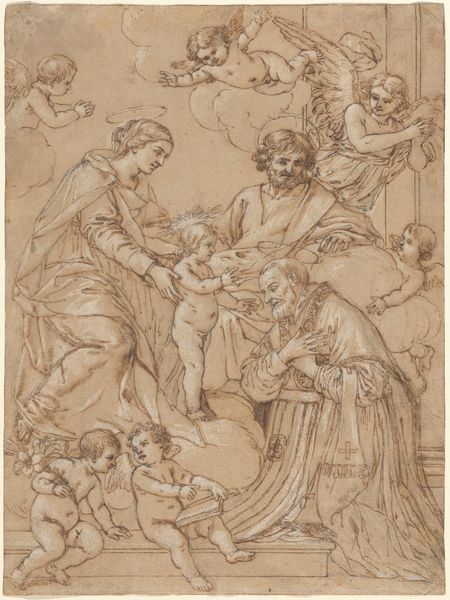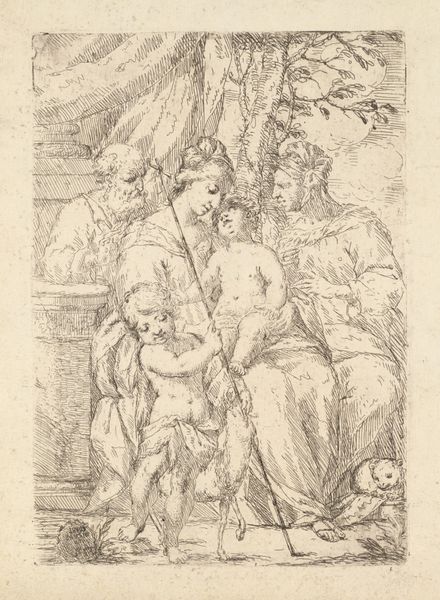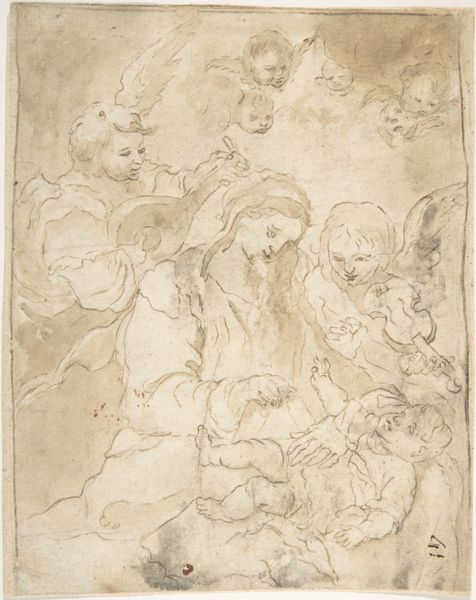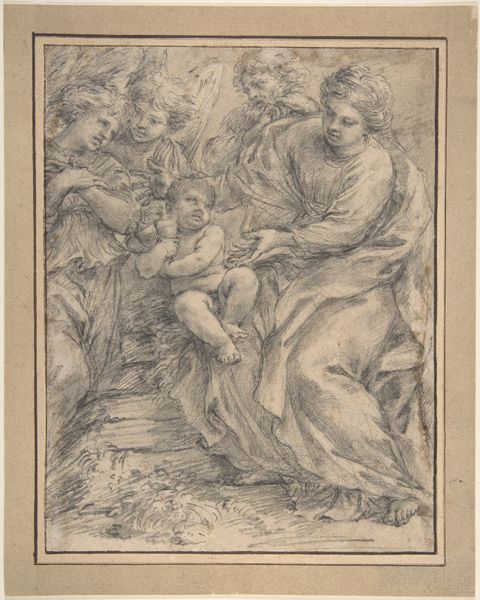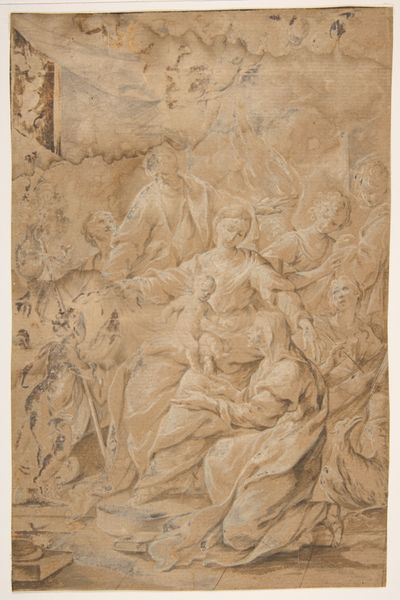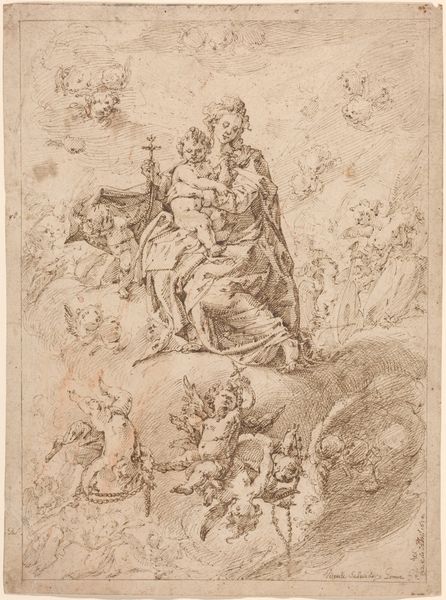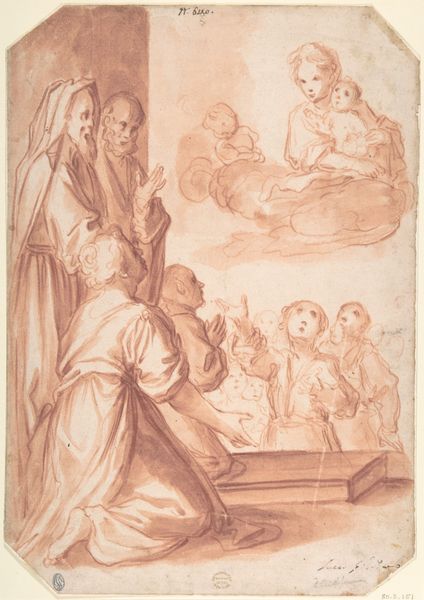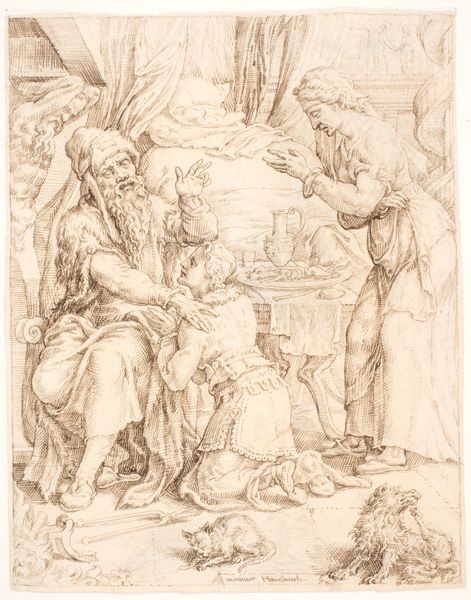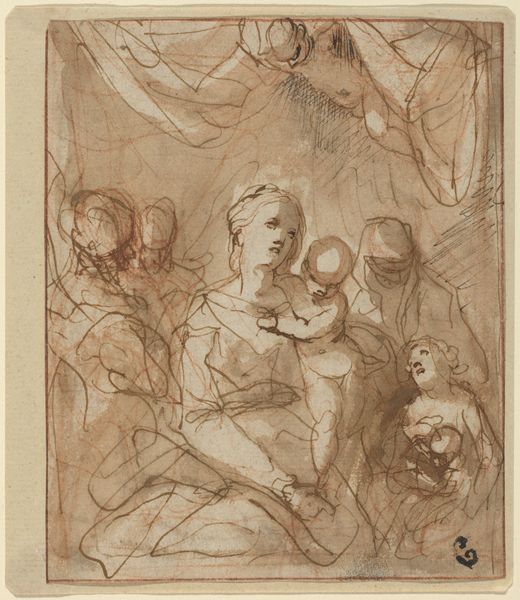
drawing, ink
#
portrait
#
drawing
#
ink drawing
#
baroque
#
figuration
#
ink
Dimensions: 342 mm (height) x 225 mm (width) (bladmaal)
Curator: This ink drawing, thought to have been made sometime between 1675 and 1775, presents the Madonna and Child with St. Antony of Padua. It resides here at the SMK, Statens Museum for Kunst. Editor: It strikes me as quite theatrical, almost operatic in its arrangement of figures, and with such dynamic movement achieved simply through line. Curator: Yes, note how the artist utilizes swift, calligraphic strokes to construct the composition, focusing particularly on the interplay of light and shadow across the subjects' drapery. This creates volume and texture, even in the monochrome. Editor: Speaking of subjects, the hierarchical relationship is apparent. Mary, elevated on a cloud, holds the child, a direct symbol of patriarchal inheritance, while St. Antony kneels reverently before them. This mirrors a rigid social structure legitimized by divine authority. Curator: Precisely. The spatial arrangement reinforces this theological framework. The grouping of the angels above further enhances this upward visual trajectory, a literal manifestation of ascending spiritual ideals. Also observe how each line is precise in conveying emotion. Editor: And I can’t help but read those plump cherubic figures not just as religious iconography, but as symbols of fertility and idealised innocence, concepts that historically served to confine women within the roles of motherhood. Curator: An insightful reading. But let us not overlook the artistic achievement of rendering such nuanced expressions of devotion and reverence in ink. It is, undeniably, a composition masterfully conceived. Editor: Still, viewing this through a contemporary lens, I'm forced to question the narratives perpetuated here, the subtle reinforcement of power structures embedded in what seems like a purely devotional scene. Curator: It highlights the lasting significance of art, that even with the passage of centuries, pieces like this offer such diverging analyses to the critical viewer. Editor: Indeed, encouraging conversations about aesthetics, religious power and socio-historical contexts all at once.
Comments
No comments
Be the first to comment and join the conversation on the ultimate creative platform.
